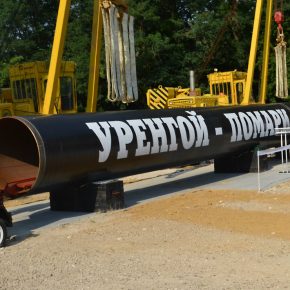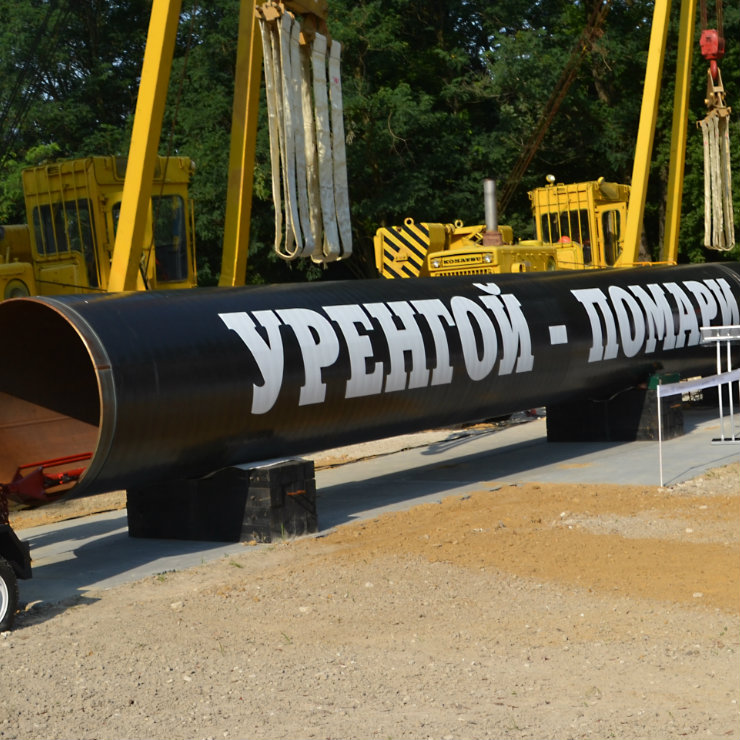
(World Bank, CC BY-NC-ND)
In addition, the country’s energy sector has been for years notoriously corrupt – arguably even more than other parts of the economy. Given this, it is no wonder that reforms in the energy sector have been for a long time viewed as one of the most important challenges facing the country. The importance of this challenge was recognized well before the Maidan revolution of February 2014. For instance, in 2010 Ukraine joined the EU Energy Community – an international organisation whose aim is to facilitate the adoption of EU energy regulations in non-EU countries.
However, energy sector reforms in Ukraine are still at an early stage of implementation. Their most visible manifestation so far have been the steep hikes in retail energy tariffs to ‘market’ levels – first of all for natural gas, which covers up to 80 per cent of residential energy needs in Ukraine. While energy price hikes have been an indispensable ingredient of economic reforms in all transition countries at some point in time, their magnitude and the short time span over which they have been implemented in Ukraine are quite unprecedented. Between January 2014 and May 2016, retail gas tariffs were hiked nearly nine times, or five times in real terms – albeit admittedly starting from a very low level. Parallel to that, the government has introduced direct subsidies which are supposed to cushion the impact of the tariff hikes on the poor segments of the population. Last year, around one-third of Ukrainian households were eligible for such subsidies, and this share is projected to go up to two-thirds this year following the latest tariff hike in May 2016.
Despite this, the energy tariff hikes – particularly the latest one implemented in May 2016 – proved to be politically highly controversial, with mass popular demonstrations, vocal dissent by the opposition from both the ‘left’ (Opposition Block) and the ‘right’ (Batkyvschyna led by Yulia Tymoshenko) parts of the political spectrum, and legal moratoriums on the new tariffs adopted by a number of regional councils across the country, including in capital Kyiv.
A vehicle of austerity
Probably the most important real motivation behind the implemented gas tariff hikes has been fiscal. Hiking retail tariffs to cost-recovery levels was deemed essential to eliminate government subsidies to Naftogaz – Ukraine’s state-owned gas monopolist which sells gas to the population and district heating companies. Indeed, historically only around one-third of Naftogaz sales have been paid from the households’ own pockets, with the rest covered from the budget. On average, the required subsidies have been to the tune of USD2bn per year, corresponding to some 2 per cent of Ukraine’s GDP last year.
For this reason, gas tariff hikes have been also demanded by the IMF as a pre-condition for its Extended Financial Facility loan program approved in March 2015. The initial target agreed with the IMF was to successively raise retail gas tariffs to ‘cost-recovery’ (i.e. reflecting the costs of imported gas) levels by 2017. However, since gas prices in Europe have in the meantime declined markedly following the drop in the oil price, this target was reached already in May 2016 – one year ahead of schedule. Since May 2016, the wholesale price of natural gas used for residential needs (which underlies the retail tariff) has been set as the price at the German gas hub NCG plus the costs of its transportation to the Ukrainian border.
The irony however is that Ukraine hardly needs imported gas to cover its residential demand any longer. Because of the de facto secession of Crimea and parts of Donbas as well as energy savings in response to the gas tariff hikes implemented in 2014-2015, residential gas consumption dropped by around one-third over the past two years, and gas import needs nearly twice. The bulk of household demand for gas can be now covered from domestic production, which has suffered only marginally from the production losses on the Black Sea shelf of Crimea. In theory, domestic production could even cover the entire residential demand for gas, if all of it were directed for this purpose (which is currently not the case).
Thus, the wholesale price for largely domestically produced gas (whose production costs are much lower) is set at the level of imported gas which is now needed only in limited quantities to satisfy the households’ needs. Does this make sense? Last year, Naftogaz already made a profit of some USD1bn (1 per cent of GDP). Clearly, following the latest tariff hike in May 2016, this profit will only rise further – as will the revenue of the government, thanks to higher collection from rent payments on domestically produced gas (set at 50 per cent of the wholesale price) and VAT, and despite the generous energy subsidies. In total, taxes make up 51 per cent of the new retail gas tariff – one of the highest shares in Europe.
This raises the issue whether these profits are justified, especially under Ukraine’s circumstances. Naftogaz is a state-owned monopoly rather than a commercial entity operating in a competitive environment, and there is no a priori theoretical reason why it should be making profits in the first place. Applying the concept of a ‘market price’ in a market dominated by a single monopoly is seldom a good idea; in the case of energy, the demand for which is for obvious reasons inelastic to the price charged, even less so. In addition, there is no guarantee that extra profits by Naftogaz will be used to invest into domestic production, as long as corruption in the gas sector remains pervasive. In any event, it is questionable whether there is a real need for higher domestic gas production, which is often advocated as being crucial to reduce Ukraine’s energy dependence on Russia. Energy efficiency improvements would be arguably a better way forward.
Tariff hikes and energy efficiency
Another declared motivation behind the implemented gas tariff hikes has been to provide energy-saving incentives. According to some estimates, energy consumption for heating purposes per square meter of residential housing in Ukraine used to be some 50 per cent higher than in the EU – even after adjusting for the colder climate. The reason for this is simple: energy in the Soviet Union was cheap and housing standards therefore not very energy-efficient, to put it mildly. In addition, many households – particularly those supplied with central heating and hot water – still lack meters and cannot regulate their energy consumption even if they wanted to.
At face value, the observed reduction in residential gas consumption over the past two years in response to the price shock could be interpreted as evidence of success of the government strategy. However, this reduction has been essentially achieved at the expense of lower heating standards: a smaller number of rooms being heated, a lower temperature in rooms which are heated, and a shorter heating season. All of this essentially meant some degree of sacrifice on the part of consumers: to save on their energy bills, they had to accept lower living standards. It is clear that the room for reduction in energy consumption achieved this way is constrained by health considerations, and may have been already exhausted by now.
Potentially much more promising are genuine energy efficiency measures, which would enable a reduction in energy consumption without sacrificing the living standards. The corresponding investment needs are however huge. According to official estimates, in order to reduce energy consumption by half, one would need to invest some 4 per cent of GDP over the next ten years. Expecting that the burden of these expenditures will be borne by households alone is probably unrealistic, so that some form of state support will be unavoidable. Although the government has already adopted some lines of support – notably the so-called ‘warm house’ loan program, according to which up to 30 per cent of loans taken for energy saving purposes can be reimbursed by the state, – their impact has been so far marginal. As of end-March 2016, the volume of such loans stood at some USD50m, or just 1.7 per cent of the annual investment needs.
The wisdom of front-loaded gas tariff hikes is questionable unless they are accompanied by more vigorous government efforts aimed at promoting energy-saving investments. Such efforts could complement, for instance, the recent EBRD programmes in Ukraine which have gained major traction in energy efficiency results, and draw on the past successful experience in Central European countries such as Romania. One possible area of government involvement could be, for instance, the installation of heating metres which may be unaffordable for the vast majority of poorer households without targeted subsidies from the government. As long as households continue using old Soviet-style heating infrastructure which does not allow to regulate the temperature, any hopes for a substantial reduction in energy consumption in response to tariff hikes may be elusive. Another possible area of government support could be the thermal insulation of residential buildings.
Government subsidies along these lines would be crucial in solving the long-term structural problem of excessive energy consumption, and should enjoy priority over the short-term task of fiscal consolidation. In fact, they could be financed from the gas tariff hikes, leaving the overall fiscal deficit unchanged.
Vasily Astrov is an economist at The Vienna Institute for International Economic Studies and an expert on Ukraine, Russia and other CIS countries. He assembled comprehensive academic and international experience in the United Kingdom (University of Warwick), Germany (Westfälische Wilhelms Universität), Norway (University of Oslo) and Russia (St. Petersburg State University) and graduated in economics (M.Sc., Dipl.-Vw) and geography (B.A.).

